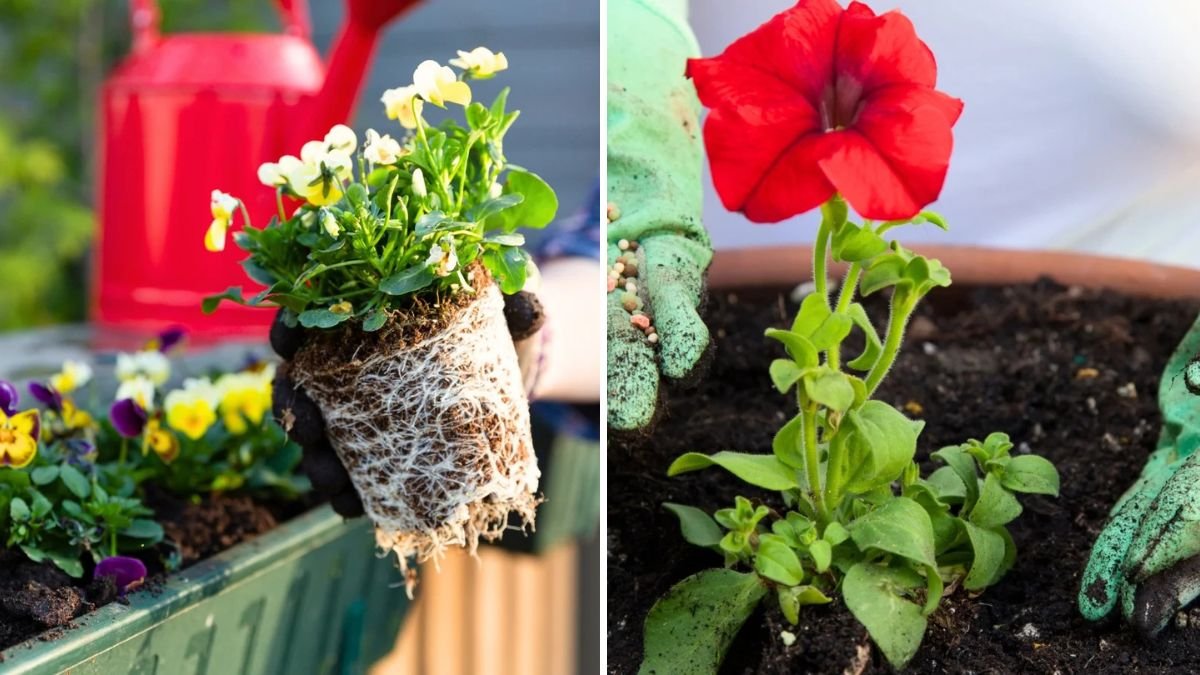Container gardening has become increasingly popular for urban dwellers, apartment balconies, and small outdoor spaces. While growing plants in containers offers flexibility and control over soil and space, it also comes with a challenge: nutrient management. Unlike in-ground gardens, container plants rely solely on the nutrients in the potting mix, which can become depleted over time. Organic fertilization provides a natural, sustainable way to nourish container gardens, promoting healthy growth, vibrant blooms, and nutritious produce without chemical buildup.
This article provides a comprehensive guide on how to fertilize container gardens organically, including soil preparation, types of organic fertilizers, application techniques, timing, and maintenance for thriving plants.
1. Understanding the Need for Fertilization in Container Gardens
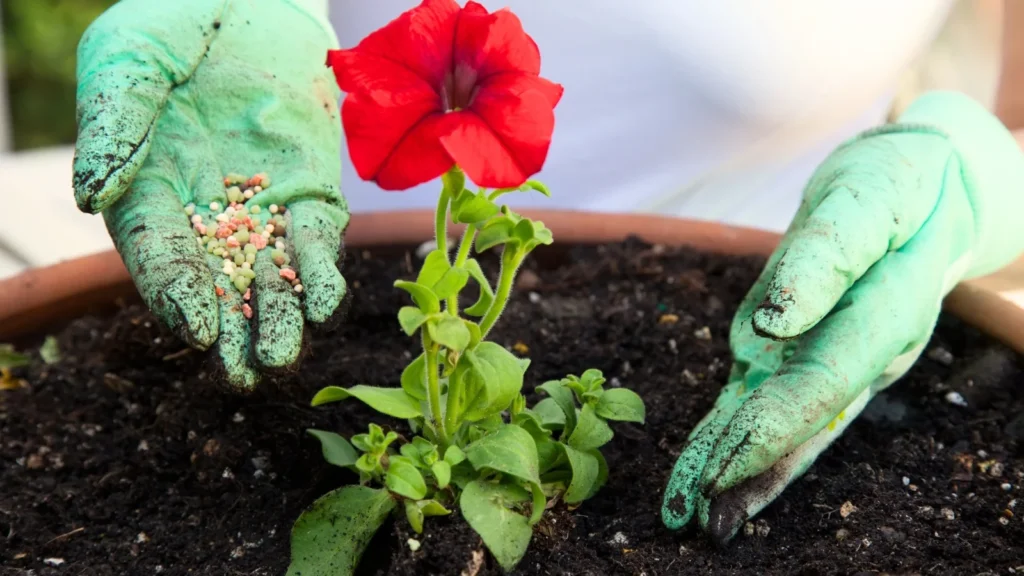
Container plants are limited by the soil in their pots. Over time, nutrients are quickly used up due to:
- Frequent Watering: Nutrients leach out during watering.
- Rapid Growth: Plants growing in confined spaces need concentrated nutrients.
- Soil Limitations: Pre-packaged potting mixes may lack long-term fertility.
- Continuous Harvesting: Edibles like herbs, tomatoes, or leafy greens remove nutrients faster.
Without fertilization, container plants may show signs of nutrient deficiency such as yellowing leaves, poor flowering, stunted growth, or weak root systems. Organic fertilization replenishes nutrients naturally, without harmful chemicals, maintaining soil health and plant vitality.
2. Benefits of Organic Fertilizers
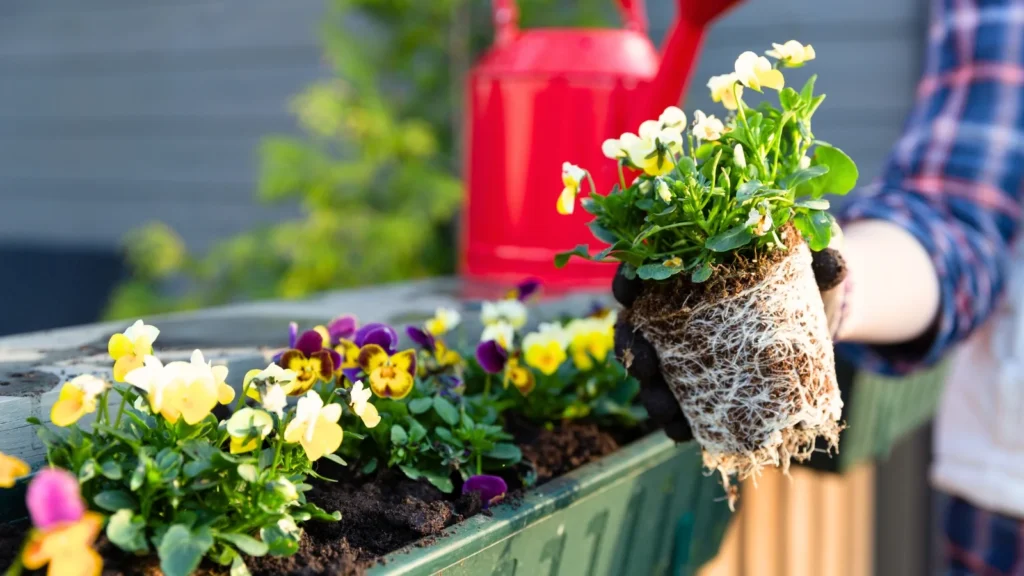
Organic fertilizers offer several advantages over synthetic alternatives:
- Environmentally Friendly: Reduce chemical runoff and soil contamination.
- Soil Health: Improve microbial activity, aeration, and water retention.
- Slow Release: Nutrients are released gradually, minimizing the risk of over-fertilization.
- Enhanced Flavor and Aroma: Organic nutrients improve the taste of edible plants.
- Safe for Children and Pets: Non-toxic options make container gardens safer for family spaces.
These benefits make organic fertilization ideal for sustainable container gardening.
3. Preparing Container Soil for Organic Fertilization
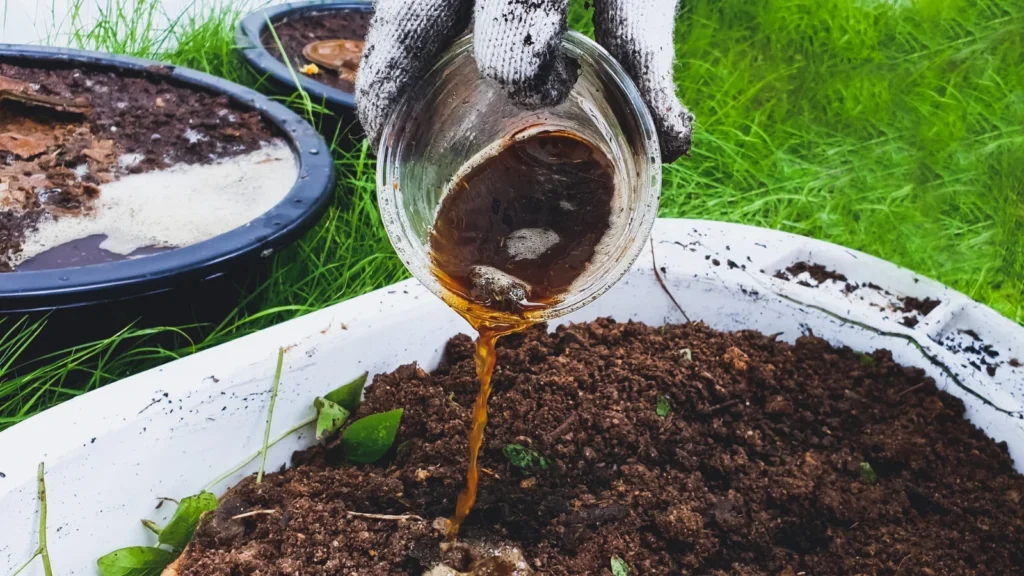
Proper soil preparation ensures nutrients are efficiently absorbed:
- Choose Quality Potting Mix: Use a lightweight, well-draining, and nutrient-rich potting mix.
- Add Compost: Incorporate 10–20% organic compost for microbial activity and slow nutrient release.
- Include Organic Amendments: Consider vermicompost, coconut coir, leaf mold, or well-rotted manure.
- Ensure Proper pH: Most vegetables, flowers, and herbs prefer slightly acidic to neutral soil (pH 6–7).
- Layering: Place a small layer of organic matter at the bottom of the pot to feed roots gradually.
A well-prepared container soil provides a fertile base for healthy plant growth.
4. Types of Organic Fertilizers for Container Gardens
Organic fertilizers come in various forms, each with unique benefits:
a) Compost
- Benefits: Rich in macronutrients, enhances soil structure, and promotes beneficial microbes.
- Application: Mix 1–2 inches of compost into the topsoil or as a layer on the soil surface.
b) Vermicompost (Worm Castings)
- Benefits: Highly nutrient-dense, improves soil aeration, retains moisture, and encourages beneficial bacteria.
- Application: Mix 10–20% vermicompost into potting soil or use as a top dressing.
c) Organic Manures
- Types: Cow, horse, or poultry manure (well-composted).
- Benefits: Adds nitrogen, phosphorus, and potassium for leafy and flowering growth.
- Application: Incorporate into soil during repotting or as a slow-release top dressing.
d) Liquid Organic Fertilizers
- Examples: Compost tea, seaweed extract, fish emulsion, and diluted organic plant-based fertilizers.
- Benefits: Quickly available nutrients, ideal for rapid growth or leafy greens.
- Application: Apply every 2–3 weeks as a foliar spray or soil drench.
e) Organic Slow-Release Pellets
- Examples: Neem cake, bone meal, or rock phosphate.
- Benefits: Gradually supply essential nutrients, especially phosphorus for roots and flowers.
- Application: Mix into soil or sprinkle around the base of the plant according to package instructions.
Using a combination of these fertilizers provides balanced nutrition for diverse container plants.
5. Applying Organic Fertilizers Effectively
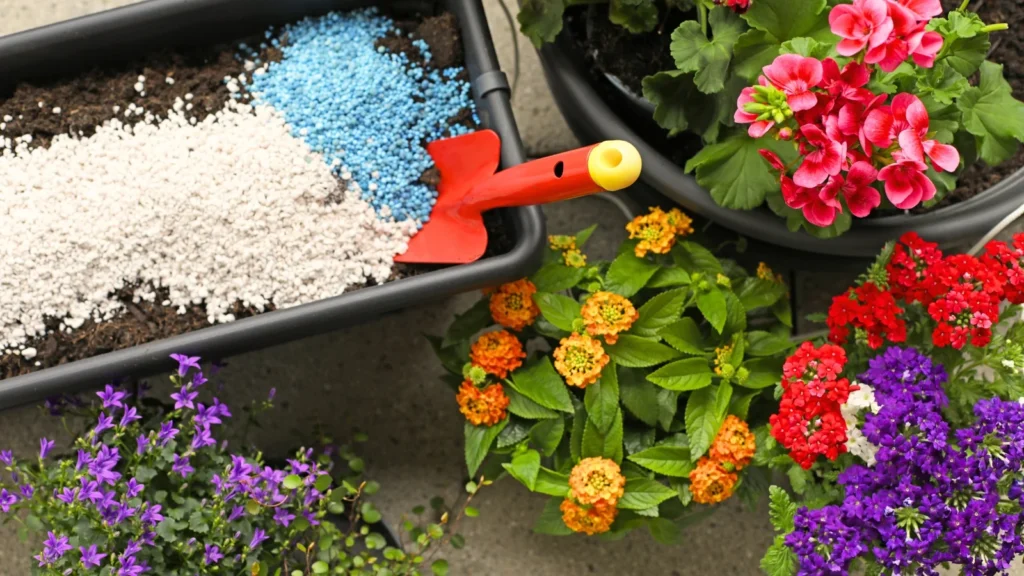
Proper application ensures plants receive maximum benefit:
- Top Dressing: Spread compost, vermicompost, or manure around the plant base without touching stems.
- Soil Incorporation: Mix slow-release fertilizers into the potting soil before planting or during repotting.
- Liquid Feeding: Use a watering can or sprayer to evenly distribute liquid fertilizers.
- Frequency: Apply top dressing every 4–6 weeks and liquid fertilizers every 2–3 weeks during active growth.
- Dosage: Follow recommended quantities; more is not better and may damage roots.
Effective application promotes strong roots, lush foliage, and vibrant blooms.
6. Fertilization for Specific Plant Types
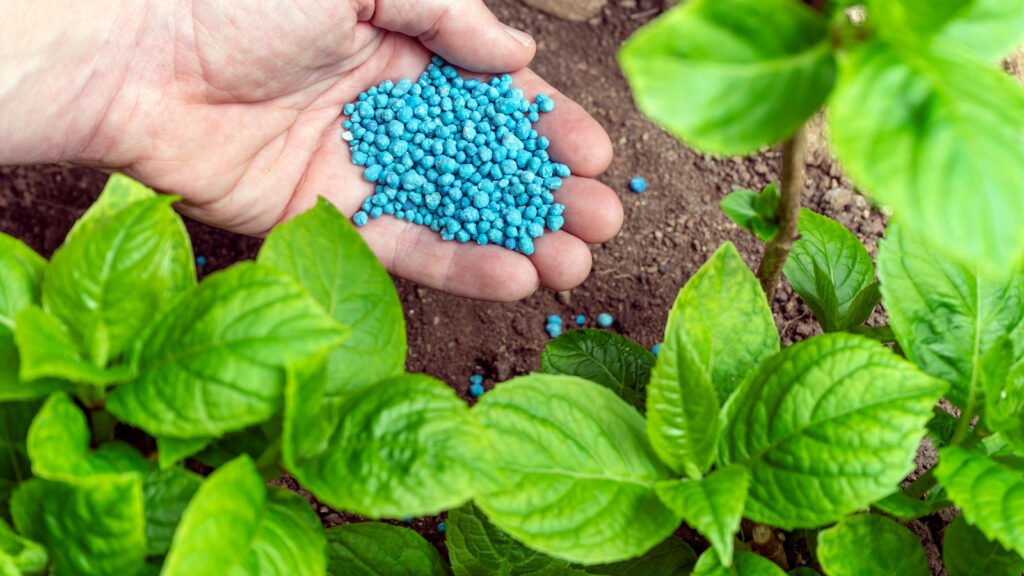
Different container plants have different nutrient requirements:
a) Leafy Greens
- Require nitrogen for lush leaves.
- Use compost, vermicompost, or liquid nitrogen-rich fertilizers every 2–3 weeks.
b) Flowering Plants
- Need phosphorus for blooms and potassium for overall health.
- Apply bone meal, compost, or seaweed extract.
c) Fruit-Bearing Plants
- Require balanced NPK (Nitrogen, Phosphorus, Potassium).
- Use organic manure and liquid fertilizers to support fruit development.
Adjust fertilizer types and schedules according to plant growth stage and needs.
7. Avoiding Common Mistakes in Organic Fertilization
- Over-Fertilization: Can lead to leaf burn, excessive foliage, or poor flowering.
- Ignoring Soil Drainage: Poor drainage prevents nutrient absorption.
- Skipping Repotting: Old soil becomes depleted even with fertilizer.
- Not Monitoring Plant Response: Observe growth and adjust fertilizer types accordingly.
- Applying Fertilizers to Dry Soil: Water first to prevent root damage.
Mindful fertilization ensures healthy, thriving container plants.
8. Seasonal Fertilization Tips
- Spring: Boost growth after winter dormancy with compost and liquid feeding.
- Summer: Continue regular feeding to support flowering and fruiting.
- Autumn: Reduce nitrogen; focus on phosphorus and potassium to strengthen roots for winter.
- Winter: Minimize fertilization for dormant plants; light feeding for evergreens if indoors.
Seasonal adjustments optimize plant performance and nutrient efficiency.
9. Benefits of Organic Fertilization in Container Gardens
- Sustainable Growth: Supports long-term soil fertility.
- Safe for Edibles: Ideal for herbs, vegetables, and fruits.
- Enhanced Plant Health: Reduces susceptibility to diseases and pests.
- Improved Taste and Aroma: Organic-fed plants produce richer flavors.
- Eco-Friendly: Reduces chemical runoff and maintains soil ecosystem balance.
Organic fertilization ensures productive, healthy, and environmentally responsible container gardening.
10. Complementary Practices for Optimal Results
- Mulching: Apply organic mulch to conserve moisture and add nutrients slowly.
- Crop Rotation: For edible container gardens, rotate plants to prevent nutrient depletion.
- Companion Planting: Combine flowering plants with herbs or vegetables for mutual growth benefits.
- Regular Monitoring: Observe leaves, flowers, and soil to adjust fertilization as needed.
These practices enhance the effectiveness of organic fertilizers.
11. DIY Organic Fertilizers for Container Gardens
For gardeners who prefer home-made solutions:
- Compost Tea: Soak compost in water for 24–48 hours and use as liquid feed.
- Banana Peel Fertilizer: Chop and bury peels near the roots to add potassium.
- Coffee Grounds: Add to soil for nitrogen and improve drainage.
- Eggshell Powder: Provides calcium for tomatoes, peppers, and leafy greens.
- Green Manure: Grow nitrogen-fixing plants and incorporate them into containers as organic fertilizer.
DIY options are cost-effective, sustainable, and nutrient-rich.
Conclusion
Organic fertilization is the key to maintaining healthy, vibrant, and productive container gardens. By understanding the nutritional needs of different plants, preparing nutrient-rich soil, selecting the right organic fertilizers, and applying them properly, gardeners can create lush container displays without relying on chemical inputs.
Whether growing leafy greens, flowering shrubs, or fruiting plants, organic fertilization supports strong roots, abundant foliage, and robust blooms, while enhancing soil health and promoting sustainability. Combined with complementary practices like mulching, seasonal adjustment, and DIY organic solutions, container gardens can flourish year-round, providing beauty, flavor, and a sense of satisfaction in small-space gardening.
By adopting these methods, gardeners not only nurture their plants but also cultivate an environmentally responsible and aesthetically pleasing garden, transforming balconies, patios, and urban spaces into vibrant green havens.
